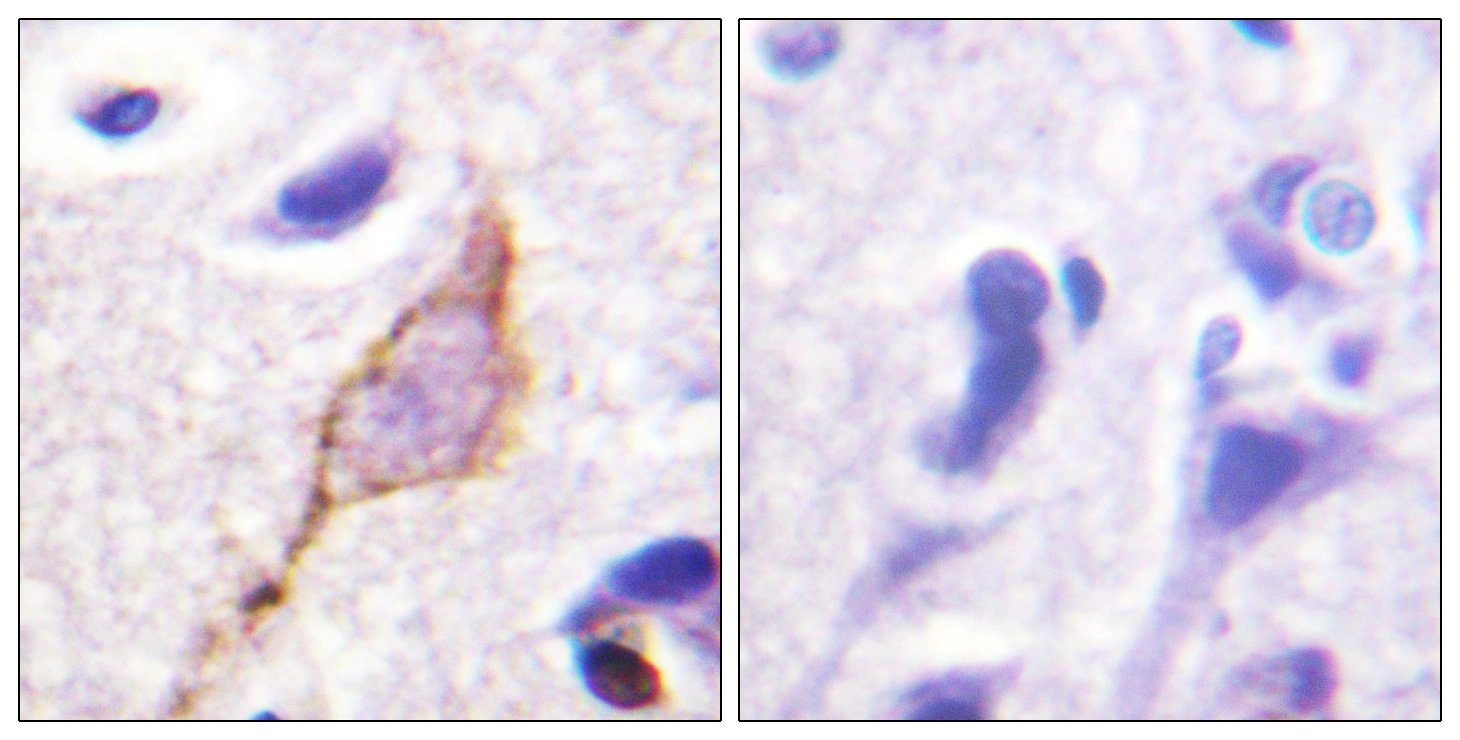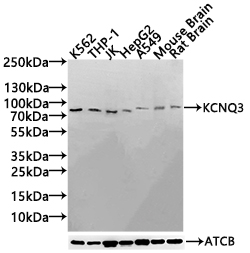
IHC-P analysis of human brain tissue using GTX87558 Kv7.3 / KCNQ3 antibody. The picture on the right is blocked with the synthesized peptide.
Kv7.3 / KCNQ3 antibody
GTX87558
ApplicationsImmunoHistoChemistry, ImmunoHistoChemistry Paraffin
Product group Antibodies
TargetKCNQ3
Overview
- SupplierGeneTex
- Product NameKv7.3 / KCNQ3 antibody
- Delivery Days Customer9
- Application Supplier NoteIHC-P: 1:50~1:100. *Optimal dilutions/concentrations should be determined by the researcher.Not tested in other applications.
- ApplicationsImmunoHistoChemistry, ImmunoHistoChemistry Paraffin
- CertificationResearch Use Only
- ClonalityPolyclonal
- ConjugateUnconjugated
- Gene ID3786
- Target nameKCNQ3
- Target descriptionpotassium voltage-gated channel subfamily Q member 3
- Target synonymsBFNC2; EBN2; KV7.3; potassium channel subunit alpha KvLQT3; potassium channel, voltage gated KQT-like subfamily Q, member 3; potassium channel, voltage-gated, subfamily Q, member 3; potassium voltage-gated channel subfamily KQT member 3; potassium voltage-gated channel, KQT-like subfamily, member 3; voltage-gated potassium channel subunit Kv7.3
- HostRabbit
- IsotypeIgG
- Protein IDO43525
- Protein NamePotassium voltage-gated channel subfamily KQT member 3
- Scientific DescriptionThis gene encodes a protein that functions in the regulation of neuronal excitability. The encoded protein forms an M-channel by associating with the products of the related KCNQ2 or KCNQ5 genes, which both encode integral membrane proteins. M-channel currents are inhibited by M1 muscarinic acetylcholine receptors and are activated by retigabine, a novel anti-convulsant drug. Defects in this gene are a cause of benign familial neonatal convulsions type 2 (BFNC2), also known as epilepsy, benign neonatal type 2 (EBN2). Alternative splicing of this gene results in multiple transcript variants. [provided by RefSeq, May 2014]
- Storage Instruction-20°C or -80°C,2°C to 8°C
- UNSPSC12352203



